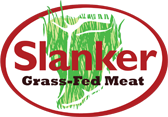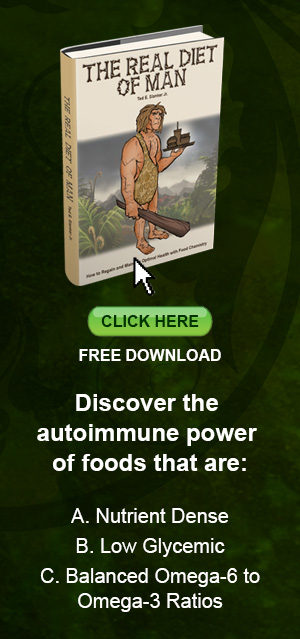Paleo Bunk
Column #84
The earliest Paleo Diet book, “The Stone Age Diet” by physician Walter L. Voegtlin, was published in 1975. It was based on “in-depth studies of human ecology and the diet of man.” On the inside cover is written: “It’s Safe, It’s Sane, It’s Simple, and It Really Works!”
Dr. Voegtlin dedicated his book to “... the occasional man, woman, or child who still can resist the specious authority of food merchants, their lavish advertisements and spectacular television commercials and retain sufficient intellectual independence to think for themselves.”
To date we’ve had 42 years of supporting anecdotal evidence and many thousands of supporting studies to only go full circle. The Paleo Diet is now considered a fad.
Most people cannot resist the merchants of conventional food, recipe books, supplements, food scare-mongering, prescription drugs, and medical procedures. Marketing gurus use “Paleo Diet” and other popular phrases as lures around which they craft feel-good or scary, yet nonsensical messages to sell whatever. So we shouldn’t be surprised that an amazing number of Paleo marketers do not follow the diet’s fundamental principles.
I’m bombarded with emails touting Paleo treats. Coconut pancakes smothered in maple syrup was a recent one. They didn’t mention that coconut flour, coconut milk, coconut oil, three eggs, and several tablespoons of maple syrup has a 2,700 mg Omega-3 deficit which requires an eight-ounce serving of salmon to balance.
They didn’t explain that the added honey and maple syrup are basically sugar. Eggs are nutrient rich, but coconut and syrup are nutrient lite. So overall the pancakes are a high glycemic, low nutrient, high Omega-6 breakfast that helps sell their books.
Their main selling point for pancakes was that sweetened pancakes aren’t boring like eating meat and eggs for breakfast. Maybe they weren’t forgoing grass-fed and/or Omega-3 meats and Omega-3 eggs so the goal was not a truly nutritious breakfast.
Savory concoctions marketed as Paleo usually include these ingredients: coconut, eggs, honey, syrups, raisins, dates, seeds, nuts and nut flours, and other high glycemic and/or high Omega-6 ingredients. The nutritional value of various combinations of these recommended ingredients is often similar to conventional grain-based foods.
Paleo marketers usually gloss over their meat recommendations by not specifying grass-fed meats. They may have an article on their site explaining grass-fed is healthier than grain-fed, but in order for their recipes to have universal appeal, they rarely call for grass-fed meats, real omega-3 poultry and omega-3 pork, Omega-3 eggs, and grass-fed cheeses and butter.
It’s no wonder Paleo Diet is now a fad. Although small, occasional dietary deviations from the classic Paleo diet will rarely cause health issues, people who eat a steady diet of “Paleo” treats will be in the same shape they would’ve been in had they never heard of Paleo.
Unfortunately, by skewing the Paleo message for their own agendas, marketers devalued its credibility and the health of their customers. On the other hand, “The Real Diet of Man” uses knowledge of food chemistry to highlight foods that are low glycemic, nutrient dense and diverse, with balanced essential fatty acids. That puts the focus on foods which help the body perform optimally. It’s not a fad, it’s science.
To your health.
Ted Slanker
Ted Slanker has been reporting on the fundamentals of nutritional research in publications, television and radio appearances, and at conferences since 1999. He condenses complex studies into the basics required for health and well-being. His eBook, The Real Diet of Man, is available online.
Don’t miss these links for additional reading:
The Stone Age Diet by Walter L. Voegtlin, M.D., F.A.C.P.
Pdf on file
Paleolithic Diet From Wikipedia, the free encyclopedia




